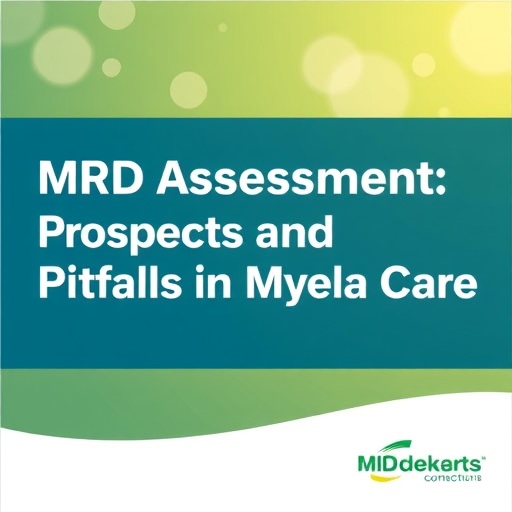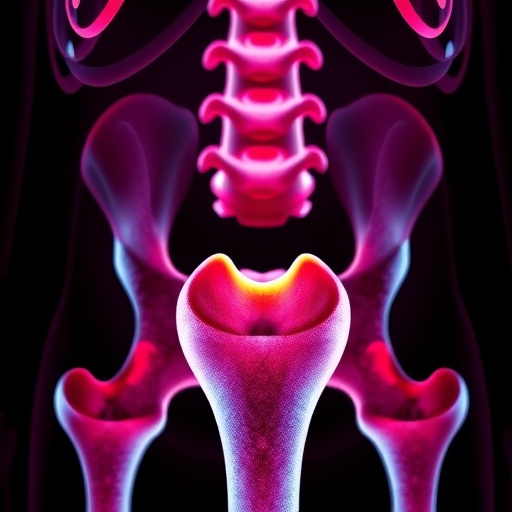
In recent years, the landscape of multiple myeloma (MM) diagnosis and treatment has undergone a profound transformation, largely driven by advancements in the detection and interpretation of measurable residual disease (MRD). Once considered a purely investigational tool, MRD assessment now stands at the forefront of clinical practice, promising to redefine how physicians monitor disease progression, evaluate treatment response, and ultimately improve patient outcomes. Cutting-edge technologies such as next-generation flow cytometry (NGF) and next-generation sequencing (NGS) have propelled MRD evaluation from the confines of research laboratories into routine clinical settings, revealing a nuanced picture of tumor burden that was previously unattainable.
The fundamental appeal of MRD lies in its capacity to detect malignant plasma cells at extraordinarily low levels—far below what standard imaging and bone marrow biopsy techniques can achieve. This extreme sensitivity enables clinicians to ascertain whether a patient’s multiple myeloma has truly reached a state of remission or if residual disease harbors the potential for relapse. Multiple large-scale studies have demonstrated that achieving MRD negativity, defined as the absence of detectable cancer cells beyond a predefined threshold, correlates strongly with superior progression-free survival (PFS) and overall survival (OS). This correlation not only reinforces MRD’s prognostic value but also elevates it as a potential surrogate endpoint in clinical trials, expediting the evaluation of novel therapeutic agents.
Technologically, MRD detection has evolved rapidly. Next-generation flow cytometry allows for the simultaneous analysis of numerous cell surface markers, enabling precise differentiation between normal and malignant plasma cells. Its speed, reproducibility, and relatively low cost make it an attractive option in many clinical laboratories. Meanwhile, next-generation sequencing leverages the unique clonotypic rearrangement of immunoglobulin genes in myeloma cells, permitting highly specific and sensitive identification of residual clones. These complementary methodologies, each with distinct technical advantages, offer a robust toolkit for MRD assessment across various clinical scenarios.
.adsslot_Ccm3WFRiLh{width:728px !important;height:90px !important;}
@media(max-width:1199px){ .adsslot_Ccm3WFRiLh{width:468px !important;height:60px !important;}
}
@media(max-width:767px){ .adsslot_Ccm3WFRiLh{width:320px !important;height:50px !important;}
}
ADVERTISEMENT
Despite the remarkable progress, significant challenges hinder the widespread adoption of MRD-guided therapeutic strategies in everyday clinical practice. A primary obstacle is standardization: variations in assay protocols, sensitivity thresholds, and sample handling practices can affect results and complicate inter-laboratory comparisons. Moreover, bone marrow heterogeneity and disease patchiness raise concerns about false-negative findings, as a single biopsy may not capture residual disease dispersed in focal niches. Efforts to harmonize MRD testing guidelines and develop less invasive sampling techniques, such as peripheral blood assays and imaging adjuncts, are underway but require further validation.
Beyond technical aspects, there are important clinical questions regarding the interpretation and actionability of MRD data. While MRD negativity portends better outcomes, not all patients who are MRD-positive relapse aggressively, nor do all MRD-negative patients remain disease-free indefinitely. This dichotomy reflects the complex biology and clonal evolution of MM and underscores the need to integrate MRD status with other prognostic markers, such as cytogenetics and functional imaging. Additionally, the timing and frequency of MRD assessments during and after therapy must be optimized to balance clinical utility, patient burden, and healthcare costs.
The implementation of MRD as a surrogate endpoint in regulatory frameworks marks a milestone in MM drug development. Regulatory bodies like the FDA and EMA increasingly recognize MRD negativity as a valid measure of drug efficacy, accelerating the approval of regimens that induce deeper and more durable disease control. This paradigm shift not only shortens the time to market for promising agents but also encourages pharmaceutical innovation focused on achieving MRD eradication. However, some skepticism remains within parts of the clinical community, given the complexities outlined above and the need for longer-term validation in diverse patient populations.
From a therapeutic standpoint, MRD assessment unlocks the potential for truly personalized medicine in MM. Patients demonstrating persistent MRD positivity might benefit from treatment intensification, novel drug combinations, or maintenance therapies targeting minimal disease reservoirs. Conversely, sustained MRD negativity could support therapy de-escalation, sparing patients from cumulative toxicities and enhancing quality of life. This dynamic approach implies a shift from static treatment algorithms toward adaptive strategies guided by real-time disease monitoring, heralding a new era of precision oncology in hematologic malignancies.
Emerging research also explores the integration of MRD assessment with novel modalities such as mass spectrometry for serum-based detection, and advanced imaging techniques like PET-CT, which together could refine disease evaluation beyond the bone marrow microenvironment. The confluence of these technologies promises comprehensive disease mapping, enabling clinicians to capture both medullary and extramedullary disease components. Such an integrated approach is crucial, as myeloma’s propensity for focal lesions and systemic dissemination poses unique monitoring challenges.
The trajectory of MRD-related research is poised to expand further through the inclusion of artificial intelligence (AI) and machine learning algorithms. These tools can assimilate vast datasets from genetic, proteomic, and imaging sources to identify patterns predictive of relapse and treatment response. By augmenting human judgement with computational precision, AI could help delineate complex disease phenotypes and personalize MRD-guided interventions with unprecedented accuracy.
Clinically, adopting MRD-based management protocols will require multidisciplinary coordination among hematologists, pathologists, and laboratory specialists. Educational initiatives are essential to familiarize providers with assay selection, interpretation nuances, and therapeutic implications of MRD results. Furthermore, transparent communication with patients about what MRD testing does and does not reveal is critical to managing expectations and supporting shared decision-making.
While the promise of MRD assessment in multiple myeloma is evident, its incorporation into routine care represents a substantial evolution with inherent challenges. Ongoing prospective trials, real-world data
Tags: advancements in myeloma treatmentchallenges in MRD assessment methodologiesimplications of MRD in clinical practicemeasurable residual disease detectionmonitoring disease progression in myelomaMRD assessment in multiple myelomaMRD negativity and patient outcomesnext-generation flow cytometry for myelomanext-generation sequencing in cancer careoverall survival and MRD correlationprogression-free survival in myeloma patientstreatment response evaluation in myeloma





